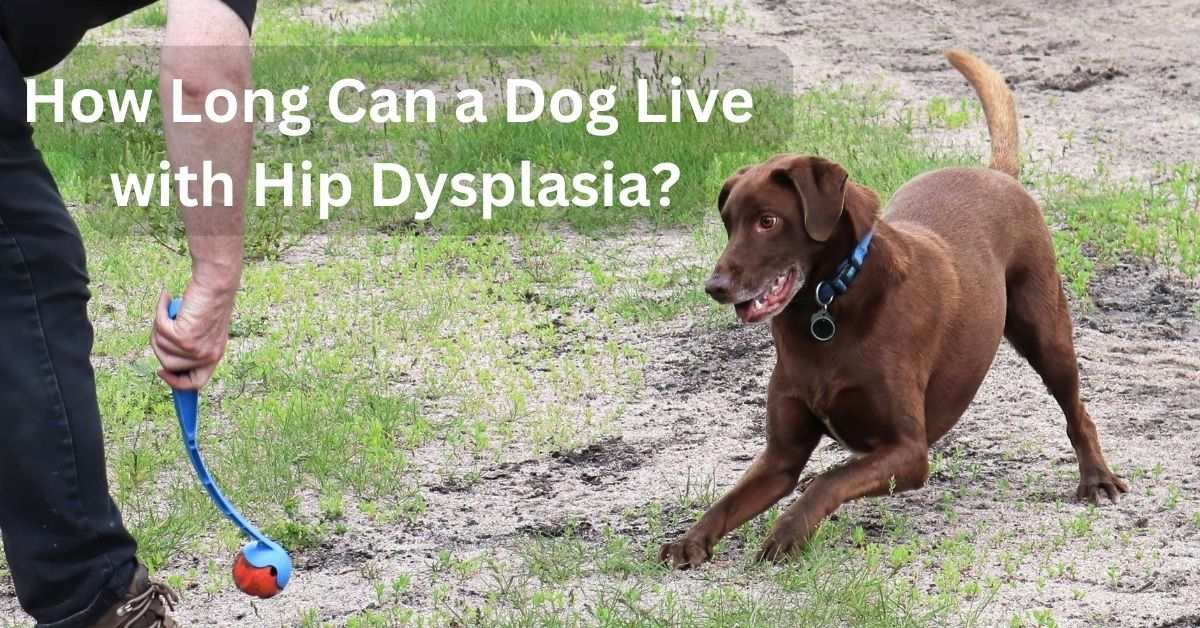How Long Can a Dog Live with Hip Dysplasia? Understanding Life Expectancy
Hip dysplasia is a common condition that affects many dogs, especially larger breeds. This condition occurs when the hip joint doesn’t develop properly, causing arthritis and pain. The length of time that a dog can live with hip dysplasia depends on several factors, including the severity of the condition, the age of the dog when diagnosed, and the overall health of the dog. In this article, we will cover related keywords, such as canine hip dysplasia and hip dysplasia treatment for dogs, to comprehensively understand how long a dog can live with hip dysplasia.
Factors Affecting Life Expectancy with Hip Dysplasia
- The severity of Hip Dysplasia: The severity of hip dysplasia plays a significant role in determining a dog’s life expectancy with the condition. Dogs with mild hip dysplasia may only experience occasional discomfort, while dogs with severe hip dysplasia may experience constant pain and mobility problems.
- Age at Diagnosis: The age at which hip dysplasia is diagnosed also affects life expectancy. Dogs diagnosed with hip dysplasia at a young age have a better chance of living longer with the condition than dogs diagnosed later in life.
- Overall Health: A dog’s overall health can also impact its life expectancy with hip dysplasia. Dogs that are overweight or have other health conditions will have a shorter life expectancy than healthy dogs.
- Treatment: The type and effectiveness of treatment for hip dysplasia also influence life expectancy. Surgery, joint supplements, and physical therapy are some treatment options available to dogs with hip dysplasia. Early treatment and continued management can help extend a dog’s life with the condition.
Hip Dysplasia in Dogs: Understanding the Condition
Hip dysplasia in dogs is a genetic condition that affects the development of the hip joint. The hip joint comprises the ball-and-socket joint of the hip bone, and in dogs with hip dysplasia, the ball and socket don’t fit together properly. This misalignment leads to arthritis and pain in the hip joint, which can impact a dog’s mobility and quality of life.
Canine Hip Dysplasia: Common among Certain Breeds
Canine hip dysplasia is a common condition that affects many dog breeds, particularly larger breeds such as German Shepherds, Labrador Retrievers, and Golden Retrievers. The condition is genetic and is caused by environmental and genetic factors. Early detection and treatment can help slow the condition’s progression and improve a dog’s quality of life.
Dog Hip Dysplasia Life Expectancy: Factors that Affect It
The life expectancy of a dog with hip dysplasia depends on several factors, including the severity of the condition, the dog’s age when diagnosed, and overall health. Dogs with mild hip dysplasia may only experience occasional discomfort, while dogs with severe hip dysplasia may experience constant pain and mobility problems. Early diagnosis and treatment can help extend a dog’s life with hip dysplasia.
Hip Dysplasia Treatment for Dogs: Options to Consider
Treatment options for hip dysplasia in dogs include surgery, joint supplements, and physical therapy. Joint supplements can help relieve pain and improve mobility, while physical therapy can help improve strength and flexibility in the affected joint. In severe cases, dog hip dysplasia surgery may be necessary to relieve and improve mobility. Pet owners must work closely with their veterinarians to determine the best dog treatment.
Dog Hip Dysplasia Surgery: A Possible Solution for Severe Cases
Dog hip dysplasia surgery is a possible solution for dogs with severe hip dysplasia. The surgery involves replacing the affected joint with an artificial one, which can relieve pain and improve mobility. However, it is important to note that surgery is not a guarantee of a cure and may have risks and complications. Pet owners should carefully consider surgery’s potential benefits and risks and work closely with their veterinarian to determine if it is the right option for their dog.

Canine Hip Dysplasia and Treatment Options
Canine hip dysplasia is a common condition affecting many dogs, and early diagnosis is crucial for increasing a dog’s life expectancy. Treatment options for dogs with hip dysplasia include surgery, joint supplements, and physical therapy. Dog hip dysplasia surgery can be an effective option for some dogs. Still, it is important to consider all treatment options and work with a veterinarian to determine the best action.
Hip dysplasia treatment for dogs can help manage the symptoms and improve the quality of life for dogs with the condition. Joint supplements, physical therapy, and other non-surgical treatments can help relieve pain and improve mobility. In severe cases, dog hip dysplasia surgery may be necessary to relieve and improve mobility.
Conclusion
In conclusion, the length of time that a dog can live with hip dysplasia depends on several factors, including the severity of the condition, the age of the dog when diagnosed, and the overall health of the dog. Early diagnosis and treatment can help extend a dog’s life with hip dysplasia. Pet owners need to work closely with their veterinarians to develop a treatment plan that is best for their dog and to ensure that their dog receives the best possible care. By understanding canine hip dysplasia and the range of treatment options available, pet owners can help improve the quality of life for their dogs and ensure that they live happy, healthy life.
FAQs
Hip dysplasia in dogs is a genetic condition that affects the development of the hip joint. The hip joint comprises the ball-and-socket joint of the hip bone, and in dogs with hip dysplasia, the ball and socket don’t fit together properly, leading to arthritis and pain in the hip joint.
The symptoms of hip dysplasia in dogs can vary but commonly include limping, stiffness, and decreased mobility, especially after exercise. Some dogs may also show signs of pain, such as whining or licking the affected area.
Treatment options for hip dysplasia in dogs include surgery, joint supplements, and physical therapy. Joint supplements can help relieve pain and improve mobility, while physical therapy can help improve strength and flexibility in the affected joint. In severe cases, dog hip dysplasia surgery may be necessary to relieve and improve mobility. Pet owners should work closely with their veterinarians to determine the best dog treatment.
